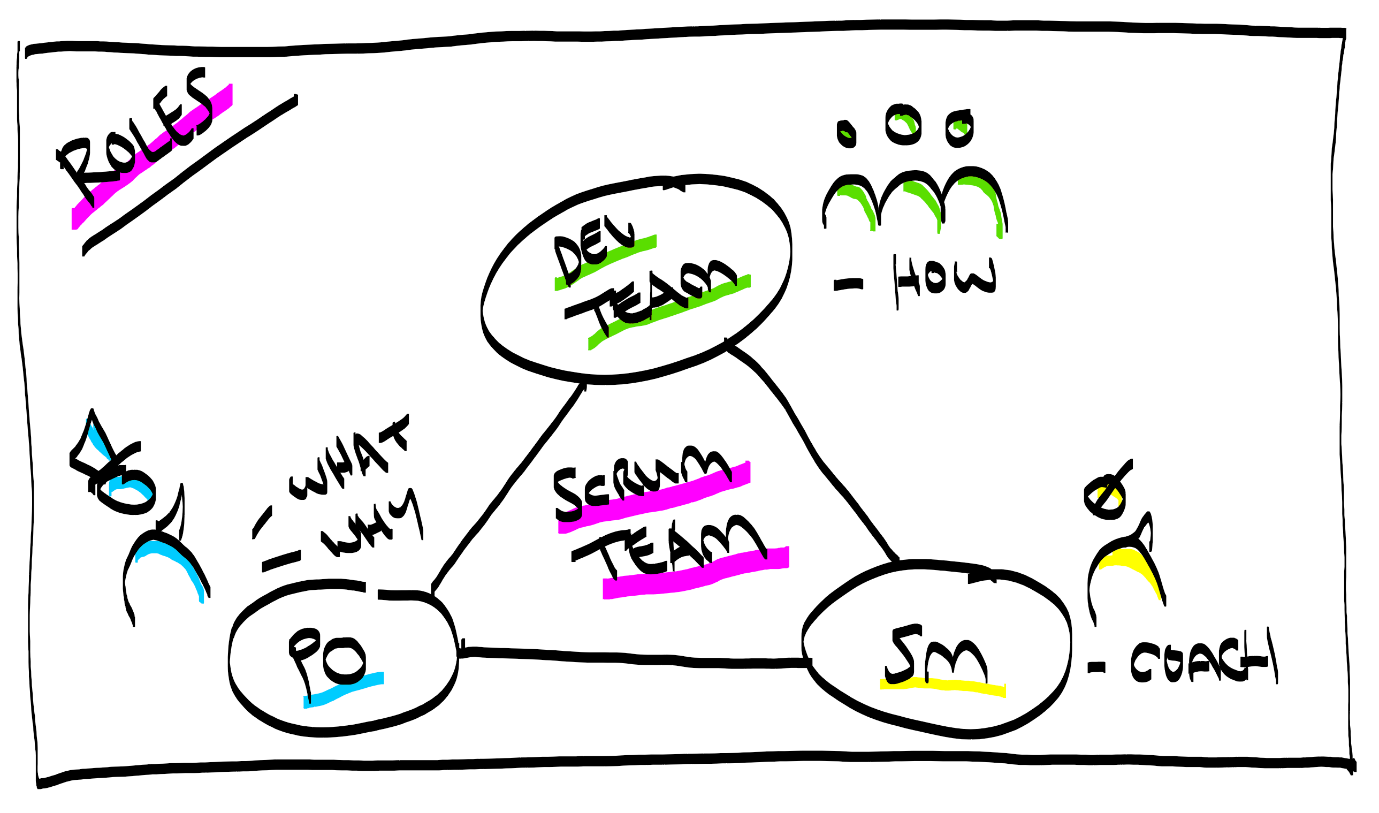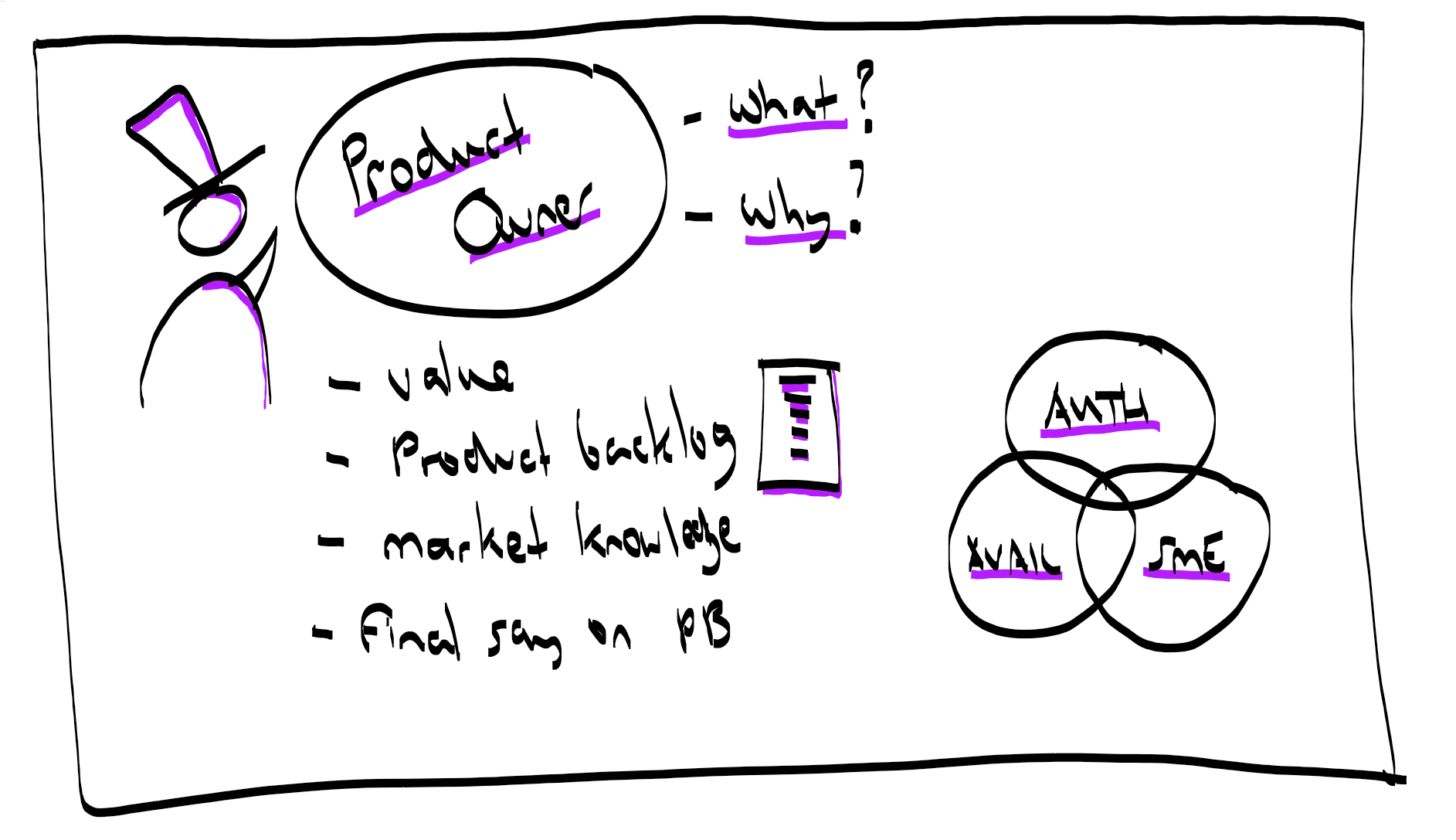Governance29
Scrum Roles in Audit
Andrew Spence
April 17, 2019
Andrew Spence
April 17, 2019
An in-depth look at the scrum roles in audit; these include the product owner, the development team and the scrum master. This article explores the various scrum roles and provides questions to consider and tips for each role.
Read on, and should you have any questions about how you can put this information to work within your company, get in touch. At Agile In Audit we are always happy to help.
A product owner is your What and Why person. They have authority, availability and the subject matter expertise (SME) to help you understand the vision of the audit, the requirements and make key decisions ensuring value is understood and realised by stakeholders, auditees and auditors.

TIP: Look at the 3 success criteria: Availability, Authority and SME, who can truly give you all three elements. One or two of these criteria don’t work and ultimately end up in the team being impeded in some way.
The development team is the cross-functional, self-organising team doing the work who are ultimately responsible for How the work is arranged, tracked and gets done. The Scrum Guide says an ideal development team size is no fewer than 3 people and no more than 9 people.

TIP: The difference between traditional approaches and Scrum is this distinction of team owning How to do the work - this creates an environment of self-organisation. If you feel such a relationship with your team might mean you are “losing control”, remember Scrum has given you the gift of a sprint. This could be a short experiment to see how the team run on their own steam and can help truly highlight knowledge gaps through open and honest questions, create ownership and increase greater Scrum Team control. Remember, we’re trying to grow trust with increased transparency and day to day working with business (PO) and Auditors (Dev Team)

The Scrum Master - who is this mysterious character? A new name for project manager, right? They drive the team to success yeah? Not quite. This role is hardest to explain in an audit context because the concept of this role just simply doesn’t exist in world of auditing, not yet anyways. The software industry would have suffered the same conundrum when Scrum was first introduced way back in 1995.
The Scrum Master takes the concept of a team lead, project manager or team “driver” and switches it around completely. At the heart of a Scrum Master is the principle of servant leadership, helping teams achieve high-performance by not command and control tactics but through coaching, teaching, mentoring and facilitating. They focus on team harmony and dynamics whilst also engaging with the wider business to help remove impediments the team are unable to resolve and educate those in the new way we are now choosing to work.
They know the rules of the game and help to impart that knowledge onto the Scrum Team and the organisation with the goal of ultimately making themselves redundant when high performance is achieved.

TIP: If Scrum Masters don’t exist in your department it’s very likely you’ll look to existing auditors to fill the gap. This is okay and quite a normal approach and may help you get up and running. Please do consider the impact a Scrum Master role will have on an auditor in your team. You will have 50% auditor and 50% Scrum Master, it’s a stop gap but not a solution. Long term, this may be a new role that needs creating in your department. It will require training, upskilling, coaching, time and patience. Much like the software world now has multiple Scrum Masters who were ex-developers, testers and PM’s, we will see this come out of the profession of audit - ex-auditors who’s sense of purpose wasn’t truly with auditing by helping the people around them find higher performance and greater happiness at work. If this is you, you may be the Scrum Master your audit department is looking for. For leaders reading this, these may be your agile change agents that help you to own your transformation and a key ally to your success with agility.
That’s it for my in depth look at Scrum Roles in Audit. As always, I recommend you absorb this in conjunction with reading the Scrum Guide: https://scrumguides.org/
Happy agile auditing and happy scrumming…
Andy
Please subscribe and become a member to access the entire Business Agility Library without restriction.